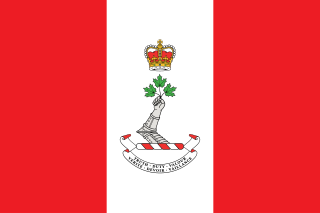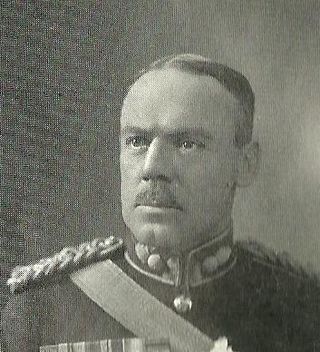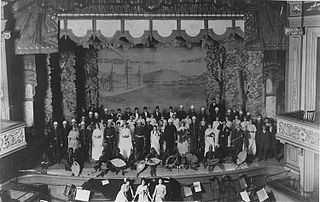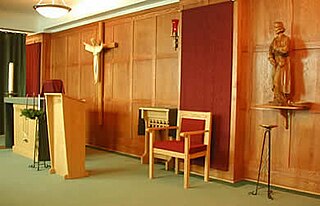Related Research Articles

The Royal Military College of Canada, abbreviated in English as RMC and in French as CMR, is a military academy and, since 1959, a degree-granting university of the Canadian Armed Forces. It was established in 1874 and conducted its first classes on June 1, 1876. The Government of Ontario empowered RMC to confer degrees in the Social Sciences and Humanities, Science, and Engineering through The Royal Military College of Canada Degrees Act, 1959. Programs are offered at the undergraduate and graduate levels, both on campus as well as through the college's distance learning programme via the Division of Continuing Studies.

The Royal Military College, Duntroon, also known simply as Duntroon, is the Australian Army's officer training establishment. It was founded at Duntroon, in Canberra, Australian Capital Territory, in 1911 and is at the foot of Mount Pleasant near Lake Burley Griffin, close to the Department of Defence headquarters at Russell Hill. It is comparable to the United Kingdom's Royal Military Academy Sandhurst and the United States Military Academy at West Point. Duntroon is adjacent to the Australian Defence Force Academy (ADFA), which is Australian Defence Force's tri-service military academy that provides military and tertiary academic education for junior officers of the Australian Army, Royal Australian Air Force and the Royal Australian Navy.

The Royal Military College Saint-Jean, commonly referred to as RMC Saint-Jean and CMR, is a Canadian military college and university. It is located on the historical site of Fort Saint-Jean, in Saint-Jean-sur-Richelieu, Quebec, 40 km south of Montreal. RMC Saint-Jean is an arm of the Canadian Military College (CMC) system that provides two college-level programs in Social Science and Science, which are closely integrated with the undergraduate programs offered by the Royal Military College of Canada. RMC Saint-Jean was granted independent university status in 2021, and it currently offers a bachelor's degree in International Studies.

The RMC Paladins are the athletic teams that represent Royal Military College of Canada in Kingston, Ontario, Canada. Its facilities include the Kingston Military Community Sport Centre (KMCSC) with seating for 3737, the Navy Bay fields with seating for 800 and Constantine Arena with seating for 1500 and the Birchall Pavilion.
Lieutenant General John Carl Murchie was a Canadian soldier and Chief of the General Staff, the head of the Canadian Army from December 27, 1943, until August 21, 1945.
Australian Army officers receive a commission from the Governor-General of Australia, who is also the Commander-in-Chief of the Australian Defence Force. The commission is signed by both the Governor-General and the Minister of Defence. Rank insignia for commissioned officers is identical to that of the British Army, with the addition of a band containing the word "Australia" beneath the insignia.
Precision is the authorized march of Royal Military College of Canada. The RMC band performs Precision during parades and march pasts, as well as on Ex-Cadet Weekends.

Fort Frederick is a historic military building located on Point Frederick on the grounds of the Royal Military College of Canada (RMC) in Kingston, Ontario, Canada. Its construction dates to 1846 and the Oregon boundary dispute. The fort consists of earthworks surrounding a Martello tower. Fort Frederick is included in two separate National Historic Sites of Canada: Kingston Fortifications National Historic Site and the Point Frederick Buildings National Historic Site.
Brigadier-General Donald Robert Agnew, was a Canadian general and educator.
Air Commodore Douglas Bradshaw, DFC, CD, ADC was a Canadian Air Commodore and educator. He was the Commandant of the Royal Military College of Canada from 1954 to 1957. He was the first president of Confederation College of Applied Arts and Technology from March 6, 1967, to 1974.

Edward Thornton Taylor (1858–1922) was a Canadian soldier and amateur athlete. He was the first Canadian-born commandant of the RMC. He was the first commandant who was a graduate of the Royal Military College. He introduced ice hockey to Kingston, Ontario, as an RMC student in 1878.

Major-General Charles Francis Constantine was a Canadian General and commandant of the Royal Military College of Canada from 1925 to 1930.

The Royal Military College of Canada Museum, established in 1962, is located in a Martello tower known as Fort Frederick on the campus of the Royal Military College of Canada in Kingston, Ontario, and is operated by the college. Until 2016 the museum had regular hours from the last weekend in June until Labour Day. Although admission was free, donations were accepted. Guided tours were offered in English and French. Genealogical research and archival records services were offered relating to college history or with inquires relating to ex-cadets when permitted by privacy regulations.

Leo, the Royal Cadet is a light opera with music by Oscar Ferdinand Telgmann. The libretto was by George Frederick Cameron. It was composed in Kingston, Ontario, Canada in 1889. The work centres on Nellie's love for Leo, a cadet at the Royal Military College of Canada who becomes a hero serving during the Anglo-Zulu War in 1879 between the British Empire and the Zulu Empire. The operetta focussed on typical character types, events and concerns of Telgmann and Cameron's time and place.

The Royal Military College of Canada Bands is the official group of bands of the Royal Military College of Canada. The group is composed of four sections: the brass and reed, the pipes and drums, highland dancers, and choristers. Total band membership consists of 105 Officer Cadets from the college. Officer Cadets in the band practice three days a week in the morning on top of attending their individual full-time university programs.

In 2013, the Royal Military College of Canada is celebrating the 50th anniversary of the two small devotional chapels in Yeo Hall, which were installed in 1963. With a view to encourage and enhance their spiritual well-being, the Protestant and Royal Catholic Chaplains, cadets and staff use the Chapels. Gifts to the chapels have been made by successive generations of cadets and ex-cadets.
Point Frederick is a 41-hectare (101-acre) peninsula in Kingston, Ontario, Canada. The peninsula is located at the south end of the Rideau Canal where Lake Ontario empties into the St. Lawrence River. Point Frederick is bounded by the Cataraqui River to the west, the St. Lawrence River to the south, and Navy Bay to the east. The peninsula is occupied by the Royal Military College of Canada (RMC). Several of the buildings located on Point Frederick and the site of the old naval dockyard are national historic sites. Fort Frederick, at the south end of the peninsula, is a feature of the Kingston Fortifications National Historic Site of Canada.
Sébastien Bouchard is a Canadian Army brigadier-general who serves as Commandant of the Royal Military College of Canada (RMC). He served previously as Commanding Officer of the Second Canadian Division Support Group in Montreal, as Deputy Chief of Staff (Strategic) at the Canadian Joint Operations Command, and as the Commanding Officer for National Support Element (NSE) for OP ATHENA
References
- ↑ Preston, Arthur. To Serve Canada: a History of the Royal Military College of Canada since the Second World War. Ottawa: University of Ottawa Press, 1991. Print
- 1 2 The College Blue Book. Pennsylvania: Macmillan reference, 2009. 1315. Print.
- 1 2 "Royal Military College." Nation. 102. (1916): n. page. Print.
- 1 2 Carmichael, Ian. Ed. Will the Real Ian Carmichael Please Stand Up. Detroit: University of Michigan, 1979. 108-110. Print.
- ↑ Royal Military College of Canada: on the Challenges of Educating Young Officers. Kingston: General Books LLC, 2010. 115.
- 1 2 "The R.M.C Cadet." Canadian geographical journal. 2-3. (1931): n. page. Print.
- ↑ Sara Borins (1994). The Real Guide to Canadian Universities. Key Porter Books. pp. 176–177. ISBN 978-1-55013-533-6.
- ↑ Murray, Edwar (BGen rtd). Disciplinary Letter to Director of Cadets. Kingston Ontario: December 1988. Print.
- 1 2 The Royal Military College of Canada - A History. National Film Board of Canada, 2001. Film.